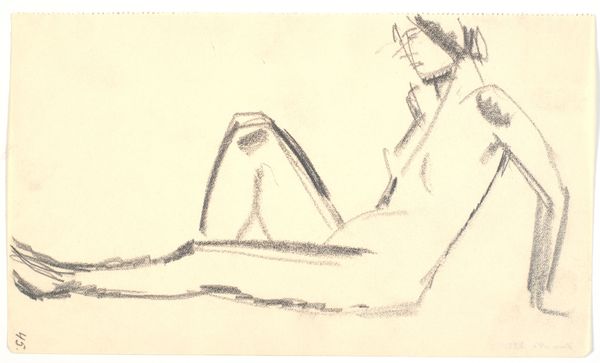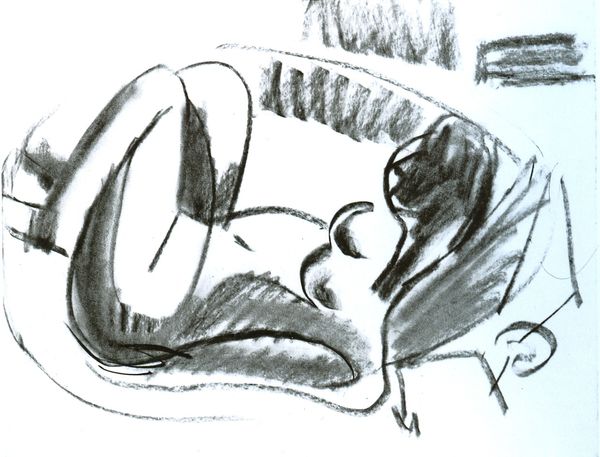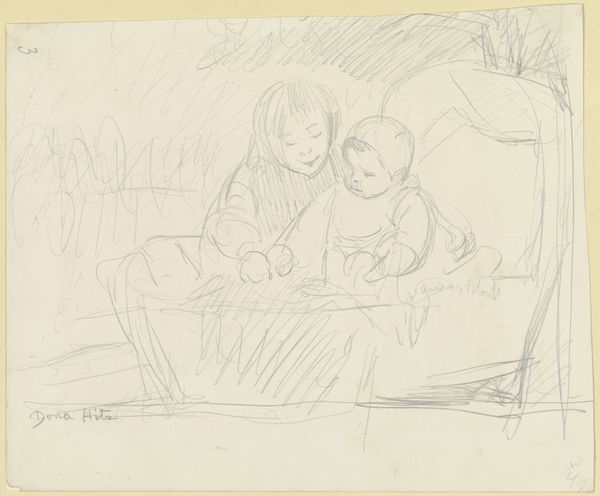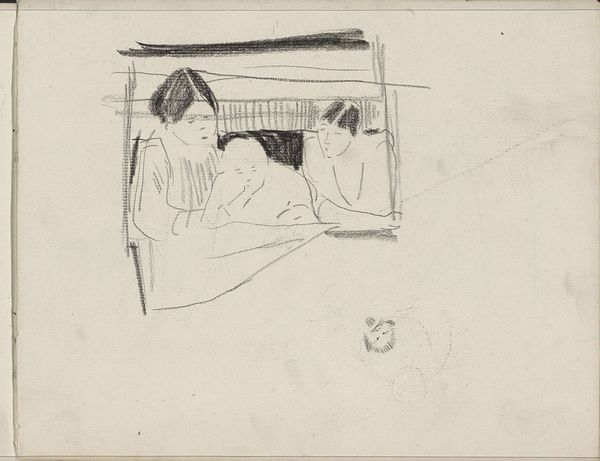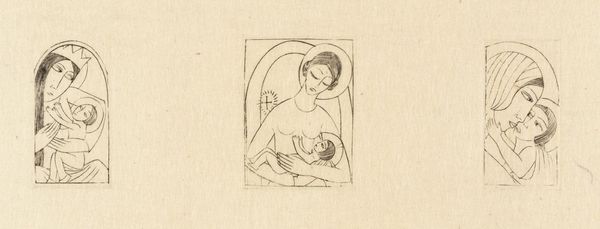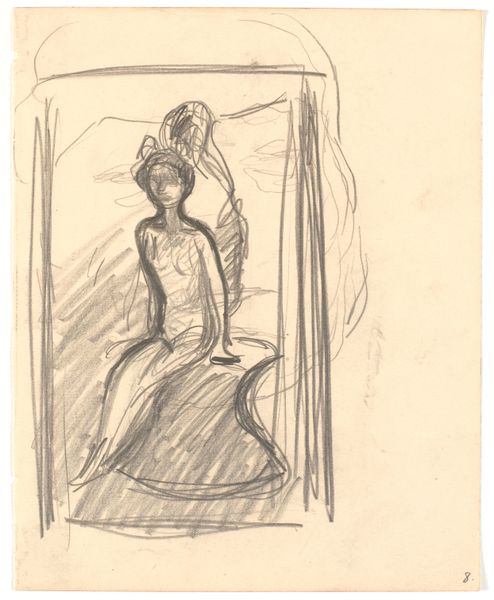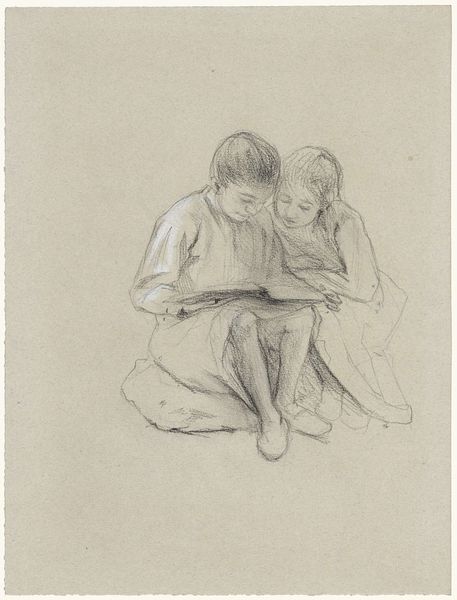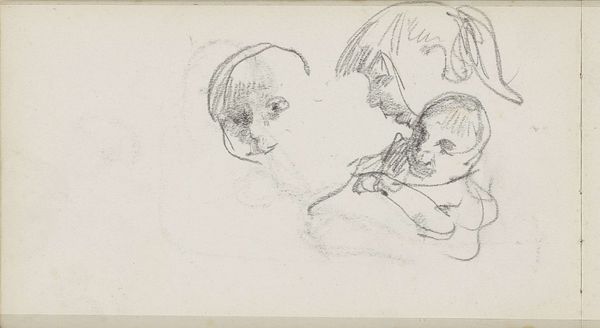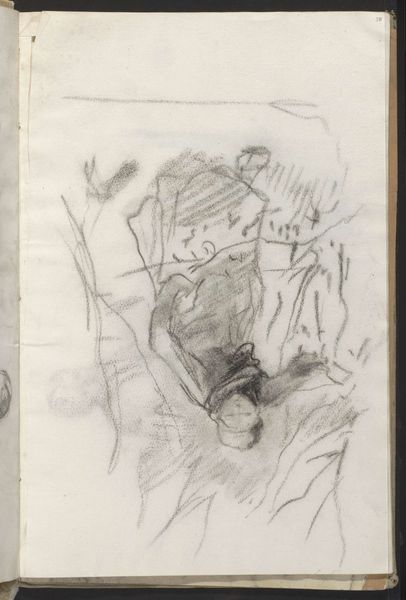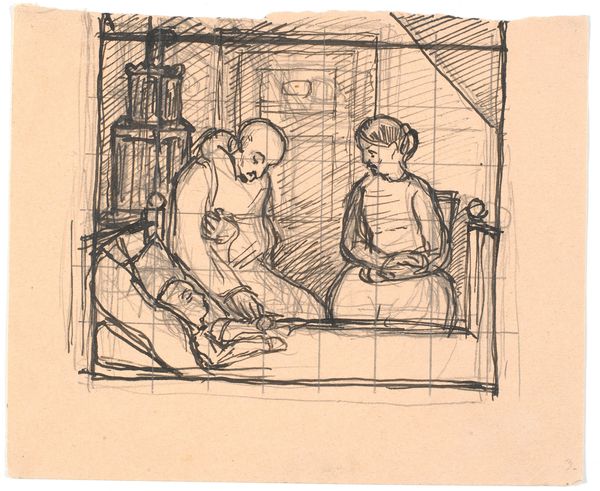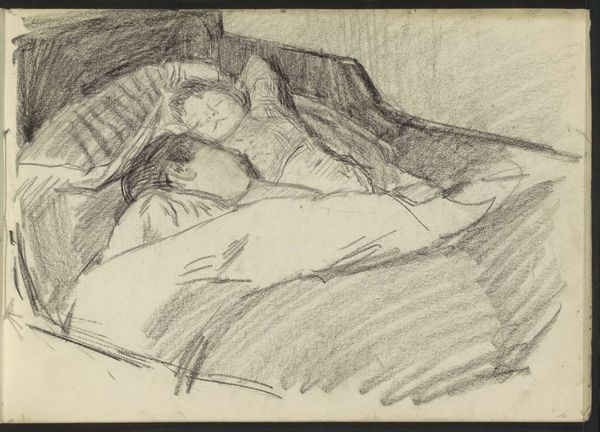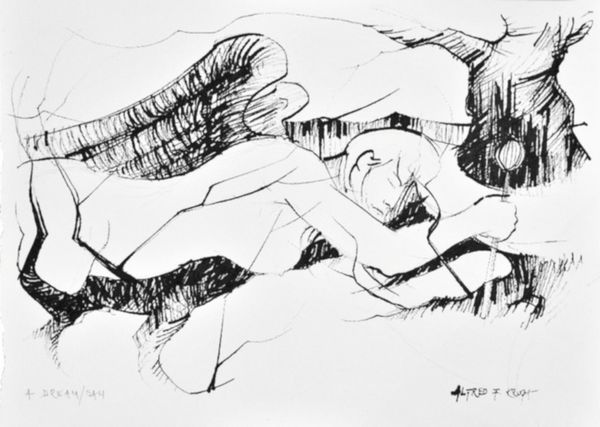
drawing, pencil
#
portrait
#
drawing
#
figuration
#
pencil
#
expressionism
Dimensions: 58.5 x 46.2 cm
Copyright: Public domain
Editor: So, this drawing is Otto Mueller's "Zwei Zigeunerinnen Mit Kind (oder Puppe)" from 1927, done in pencil. I'm struck by how tender yet unsettling it feels. The lines are so raw, but the scene suggests a moment of quiet intimacy. What do you see in this work? Curator: The tension you perceive is very important. Mueller, as an Expressionist, often used stark lines to convey emotion, but here, that rawness takes on a complex dimension when depicting Romani women. How does the title itself, offering “Kind (oder Puppe),” shift our perception? Editor: It makes me question the depiction, almost like it’s dehumanizing. Were Romani people often represented in ways that denied their humanity during that time? Curator: Exactly. This piece was created during a period of intense prejudice and persecution towards the Romani people. Consider the prevalent racist tropes; this image can, unfortunately, be interpreted through that lens. We have to ask if Mueller is challenging those harmful stereotypes or perpetuating them. How does this affect how you see it now? Editor: It makes me more critical. The gazes of the women are averted; is it vulnerability or a mask? And the "child or doll"—that ambiguity feels much darker now, highlighting the precarity of Romani lives then. Curator: Precisely. Recognizing the historical context and power dynamics is key. It forces us to grapple with the uncomfortable truth that even seemingly ‘tender’ images can carry the weight of systemic prejudice. Editor: I hadn't thought about it that deeply, but seeing it through this lens has really changed my perspective. It's not just a simple portrait; it's a loaded depiction that needs unpacking. Curator: Indeed, art like this asks us to be active viewers, constantly interrogating the narratives presented and the historical realities they reflect.
Comments
No comments
Be the first to comment and join the conversation on the ultimate creative platform.
